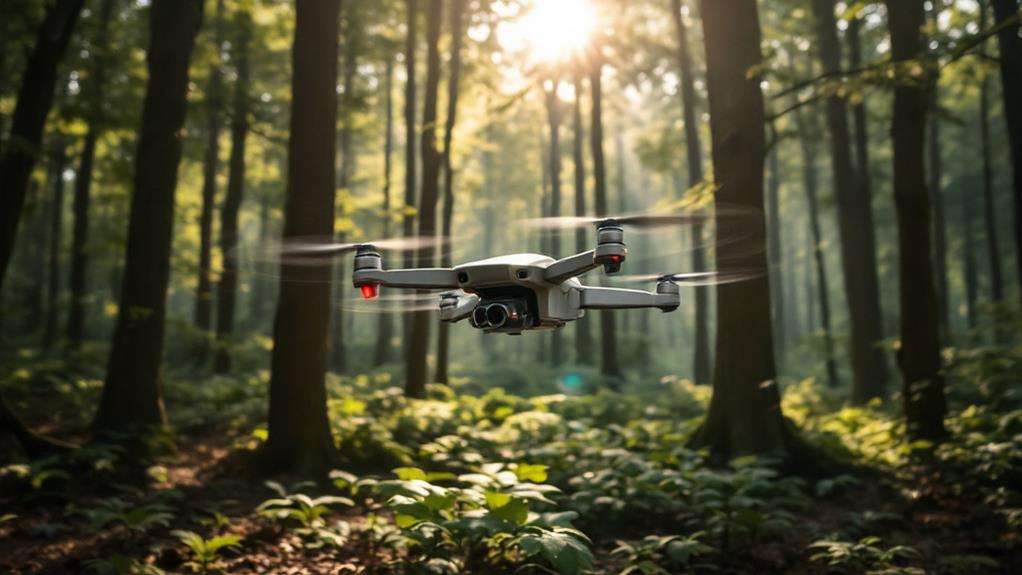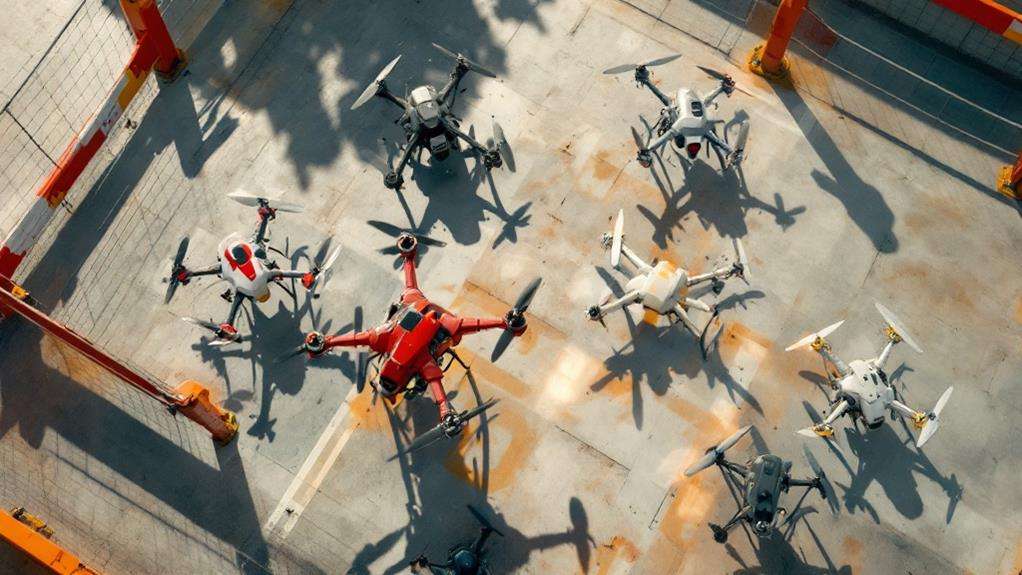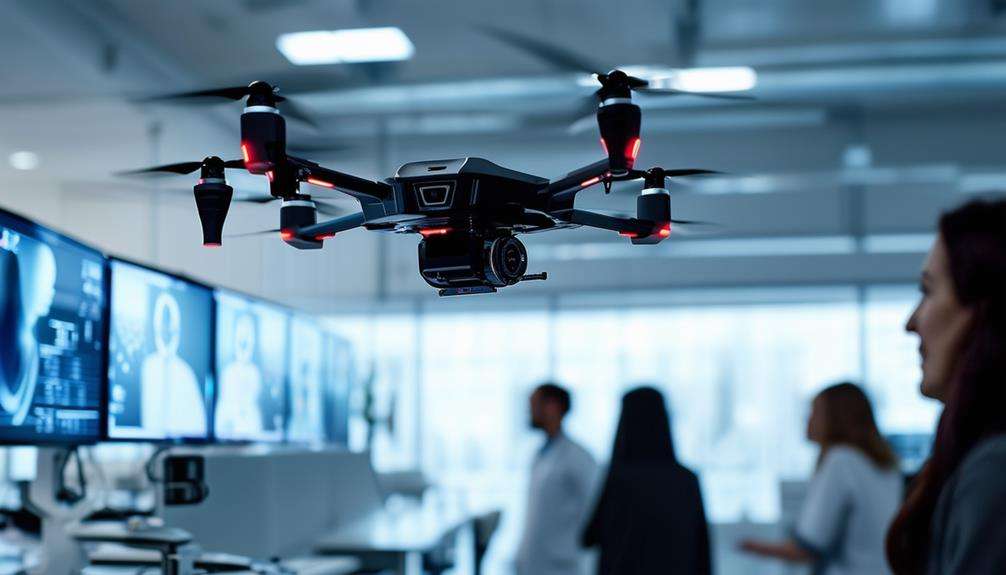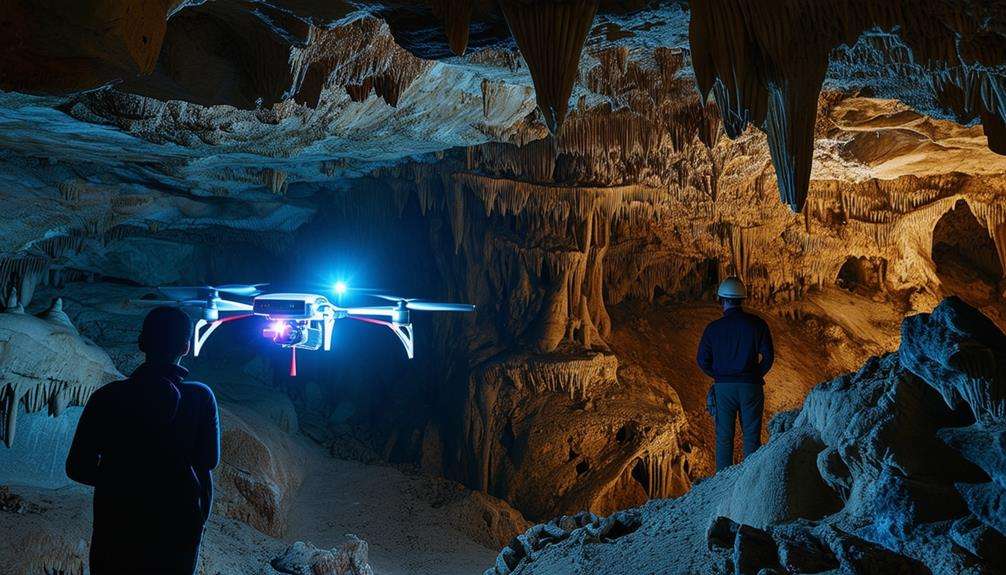Is Drone Obstacle Avoidance Worth It?

Drone obstacle avoidance is definitely worth it if you're aiming for enhanced safety and fewer collisions during flights. It uses advanced sensors and algorithms, like in DJI's models, to navigate around potential hurdles autonomously. However, it's not foolproof—small objects and complex terrains can sometimes go undetected. You shouldn't rely solely on these systems; a pilot's vigilance is essential. Testing in controlled environments helps ensure you know what to expect in real-world scenarios. While some user experiences highlight minor detection failures, the overall reduced risk of crashes makes it worthwhile. Discover more insights on how this technology could transform your flying experience.
Key Takeaways
- Obstacle avoidance significantly enhances drone safety by reducing collision risks during autonomous flights.
- Comprehensive sensor systems enable real-time navigation adjustments for better reliability.
- Limitations exist in detecting smaller obstacles, highlighting the need for continued pilot vigilance.
- User experiences vary, emphasizing the importance of testing systems in controlled environments.
- Familiarity with manual controls is crucial for effective handling in emergencies and challenging conditions.
Understanding Obstacle Avoidance
Grasping the concept of obstacle avoidance is crucial for anyone interested in drone technology. Obstacle avoidance technology is designed to enhance your drone's safety by automatically detecting and avoiding objects that could lead to collisions. Leading models like the DJI Mini 4 Pro feature advanced collision avoidance systems, utilizing omnidirectional sensing and sophisticated algorithms to navigate effectively in the real world. Despite these advancements, it's important to remember that these systems aren't foolproof. For instance, environmental factors, such as wind conditions and temperature variations, can significantly impact the performance of these systems, requiring real-time adjustments and heightened awareness. You might encounter limitations, such as difficulty in recognizing smaller obstacles or maneuvering through complex terrains. This is where your skills in manual flight come into play. Even with the best technology, continuous visual monitoring of your drone is essential. Relying solely on obstacle avoidance features could lead to complacency, creating a false sense of security and potentially compromising flight safety.
Manufacturers like DJI stress that understanding the limitations of these systems is vital. Before you fully trust your drone's obstacle avoidance capabilities, it's wise to test them in controlled environments. This approach ensures you're prepared for real-world scenarios and can take manual control if necessary, ensuring a safer flying experience.
Evaluating Drone Safety Features
After understanding how obstacle avoidance works, it's time to evaluate the broader scope of drone safety features. Obstacle avoidance technology, especially in models like the DJI Mini 4 Pro, plays a crucial role in risk mitigation by offering automated object detection. This significantly lowers the chances of collisions during autonomous flight in challenging environments. However, these systems aren't foolproof. Users have noted that obstacle avoidance can sometimes fail to detect smaller objects, leading to potential mishaps.
Comprehensive sensor coverage, as seen in drones such as the DJI Mini 4 Pro and Skydio 2S, provides real-time navigation adjustments, enhancing flight reliability. Despite these advancements, manufacturers like DJI emphasize the indispensable role of pilot vigilance. While OA systems can help, relying solely on them might lead to complacency. It's essential for pilots to stay alert and visually monitor their drones, even with active obstacle avoidance.
| Drone Model | Feature | Benefit |
|---|---|---|
| DJI Mini 4 Pro | Obstacle Avoidance | Risk Mitigation |
| Skydio 2S | Comprehensive Sensors | Autonomous Flight |
| DJI Models | Manufacturer Warnings | Pilot Vigilance |
Ultimately, understanding and testing these systems in controlled settings is vital before full deployment.
Comparing Leading Drone Models

When comparing leading drone models, it's clear that each offers unique features tailored to different flying needs and environments. The DJI Mini 4 Pro, a standout drone with obstacle avoidance, boasts omnidirectional sensing and 34 minutes of flight time. Its under-250g weight means you won't need FAA registration, making it perfect for those who want an easy-to-use option for extended exploration. Additionally, the DJI Mini 4 Pro can be an excellent choice for aerial photography due to its compact design and the ability to capture high-quality images. On the other hand, the Skydio 2S is designed for those who want robust autonomous capabilities. Its follow-me technology and 3D mapping make it excel in dense environments like forests, although it may face challenges with narrow gaps and low-light conditions.
For those seeking comprehensive obstacle detection, the DJI Mavic 3 Pro offers 360-degree sensor coverage, providing you with enhanced reliability during autonomous flights, thanks to its Pro obstacle system. If you're looking at entry-level options, the Autel EVO Nano+ might catch your eye. It effectively detects obstacles with its front, rear, and bottom sensors, automatically stopping when needed. Lastly, cheap drones like the RiskOrb Drone offer basic avoidance features, but you need to know that user reports suggest performance inconsistencies, requiring vigilant piloting.
User Experiences and Insights
Although drone obstacle avoidance technology promises safer flights, user experiences reveal a mixed reality. You might find that some pilots navigate complex environments with ease, while others face unexpected crashes due to the system's limitations. It's common to hear skepticism regarding the reliability of these features. Many users have encountered situations where drones fail to stop, or worse, collide with obstacles like trees and branches despite being recognized by the system.
Feedback from seasoned drone enthusiasts suggests that you shouldn't rely solely on automated avoidance systems. Manual control remains crucial, especially in challenging environments. Users often recommend practicing in controlled settings to get a good grasp of how these systems perform. It's important to remember that obstacle avoidance doesn't always detect small or narrow obstacles, particularly in low-light conditions, which can significantly impact their real-world effectiveness.
There's a general agreement within the drone community on the need to understand each drone's limitations. Testing these features in controlled environments before flying extensively can prevent mishaps. Ultimately, knowing when to take manual control can be the difference between a smooth flight and an unfortunate crash.
Tips for Safe Drone Flying

Flying a drone safely requires more than just trusting its automated systems. You need to take proactive steps to ensure a secure flight. Always maintain a visual line of sight with your drone, whether it's a Mini or a DJI Mavic model, to react swiftly to unexpected obstacles. Even with features like active track, you can't rely entirely on technology. Familiarize yourself with the user manual and understand the limitations of its obstacle avoidance system, as manufacturers like DJI offer crucial warnings about possible failures.
Conduct test flights in controlled environments to evaluate the effectiveness of obstacle avoidance before venturing into complex or crowded areas. Regularly practice your manual piloting skills. It's easy to become complacent if you rely solely on automatic features, which could diminish your ability to handle emergencies.
Stay informed about local regulations and ensure you comply with legal requirements for drone operation. Understanding these can significantly enhance safety during flights. Finally, make sure you're always prepared to switch to manual control if necessary. Here's a quick guide to help you remember these safety tips:
| Key Action | Why It's Important | How to Implement |
|---|---|---|
| Visual Line of Sight | Quick reaction to obstacles | Always keep your drone in view |
| Manual Skills | Handle emergencies effectively | Practice regularly |
| Know Regulations | Enhance flight safety | Stay updated and compliant |




